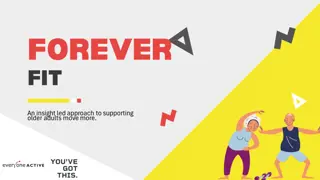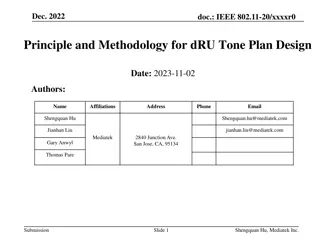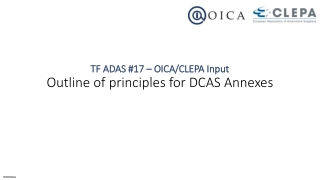
Responsive vs. Adaptive Design: Finding the Perfect Fit for Your Website
In the fast-paced digital landscape, where user experience reigns supreme, selecting the appropriate design approach for your website is paramount. With the proliferation of mobile devices, ensuring seamless accessibility across various screen sizes has become a necessity. This brings us to a pivotal decision: Should you opt for responsive design or adaptive design? Let's delve into the nuances of each approach to help you make an informed choice for your website design.
Download Presentation
Please find below an Image/Link to download the presentation.
The content on the website is provided AS IS for your information and personal use only. It may not be sold, licensed, or shared on other websites without obtaining consent from the author. Download presentation by click this link. If you encounter any issues during the download, it is possible that the publisher has removed the file from their server.
Presentation Transcript
Responsive vs. Adaptive Design: Finding the Perfect Fit for Your Website In the fast-paced digital landscape, where user experience reigns supreme, selecting the appropriate design approach for your website is paramount. With the proliferation of mobile devices, ensuring seamless accessibility across various screen sizes has become a necessity. This brings us to a pivotal decision: Should you opt for responsive design or adaptive design? Let's delve into the nuances of each approach to help you make an informed choice for your website design. Website design plays a pivotal role in shaping user interactions and perceptions. It encompasses not only visual aesthetics but also functionality, navigation, and overall user experience. In today's mobile-centric world, where users access websites from an array of devices, the need for a design that adapts to different screen sizes and resolutions is undeniable. Responsive design, a popular choice among web designers, employs a fluid grid system and flexible layouts to ensure that web pages automatically adjust to fit the screen size of the device being used. This approach prioritizes flexibility and scalability, offering a seamless viewing experience across desktops, laptops, tablets, and smartphones. By embracing responsive design principles, websites can maintain consistency in design and functionality across diverse platforms, enhancing user satisfaction and engagement. On the other hand, adaptive design takes a more tailored approach by creating multiple versions of a website, each optimized for specific device categories or screen sizes. Unlike responsive design, which fluidly adjusts elements based on viewport width, adaptive design delivers pre- defined layouts optimized for various breakpoints. This allows for greater control over the user experience on different devices, ensuring that content is displayed in the most effective manner for each screen size. When considering the merits of responsive vs. adaptive design, several factors come into play, including the nature of your content, target audience preferences, and budgetary constraints. Responsive design offers a cost-effective solution for maintaining a single website that caters to diverse devices. Its fluid nature enables seamless content adaptation and simplifies maintenance tasks, making it an attractive choice for businesses seeking broad compatibility and scalability in their website design. If you want to get web design services AJ Software UK could be a life savior for you is this matter. However, adaptive design shines in scenarios where customization and fine-tuning for specific device categories are paramount. By tailoring layouts and content presentation for different screen sizes, adaptive design can deliver optimized user experiences that cater to the unique needs and preferences of mobile, tablet, and desktop users. While it may involve more upfront
development effort and maintenance overhead, the tailored approach of adaptive design can yield superior results in terms of user engagement and conversion rates. In conclusion, the choice between responsive and adaptive design hinges on your specific requirements, goals, and priorities in website design. Whether you prioritize flexibility and cost- efficiency or customization and optimization, both approaches offer distinct advantages in enhancing the accessibility, usability, and performance of your website. By carefully evaluating your needs and consulting with experienced web designers, you can determine the right approach that aligns with your vision for an exceptional online presence. As you embark on your website design journey, remember that the ultimate goal is to create a user-centric experience that delights visitors across all devices. Whether you opt for responsive design's adaptability or adaptive design's precision, the key lies in crafting a seamless and engaging digital environment that captivates your audience and reinforces your brand's identity. So, which approach will you choose for your website design? The decision rests in your hands, guided by your unique objectives and aspirations for online success. Website design is not just about aesthetics; it's about creating an immersive digital experience that resonates with your audience and drives meaningful interactions. Author: (David Hawk) David Hawk is an Expert in Digital Marketing having 7+ years of experience in this industry.
















































